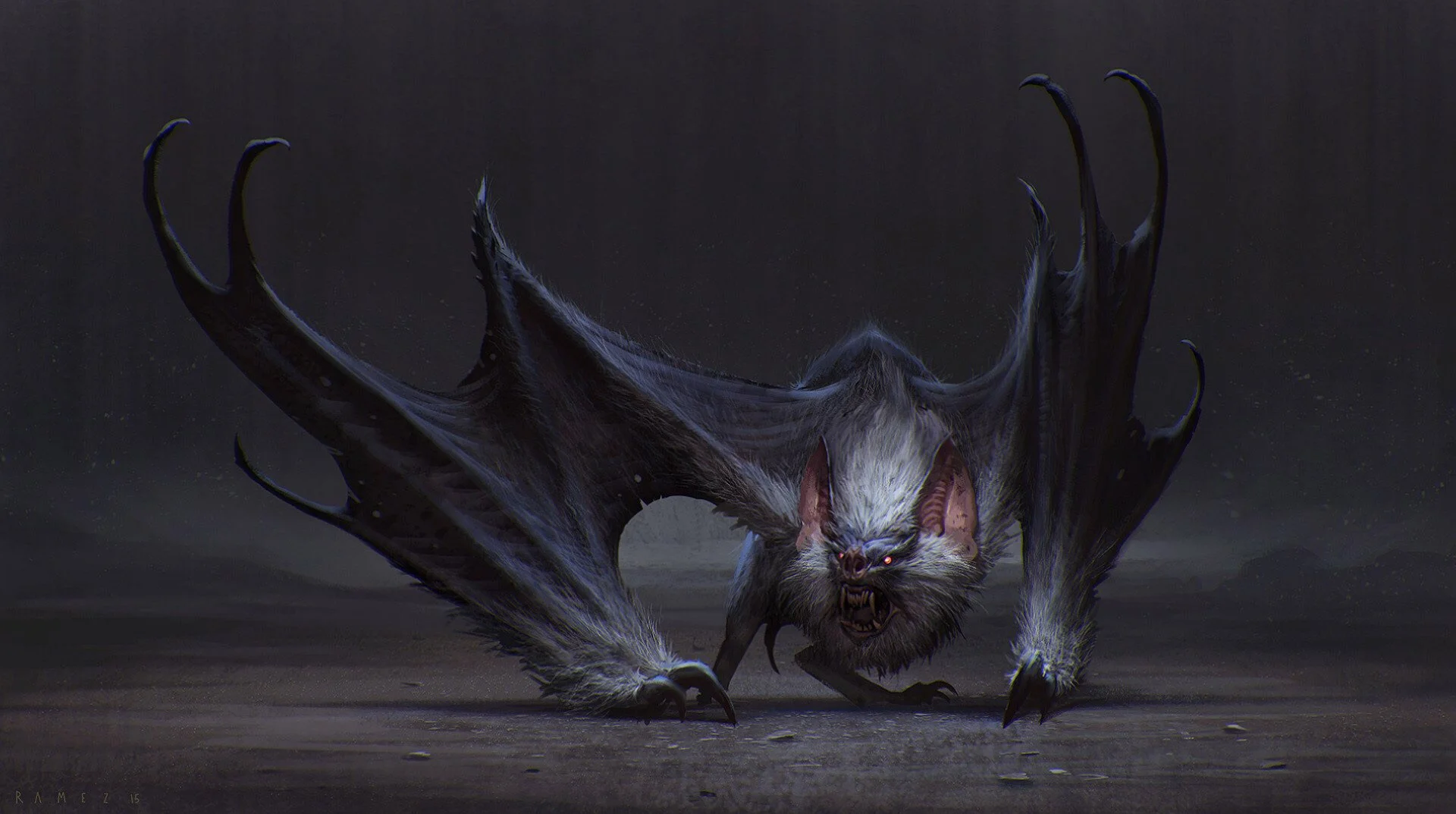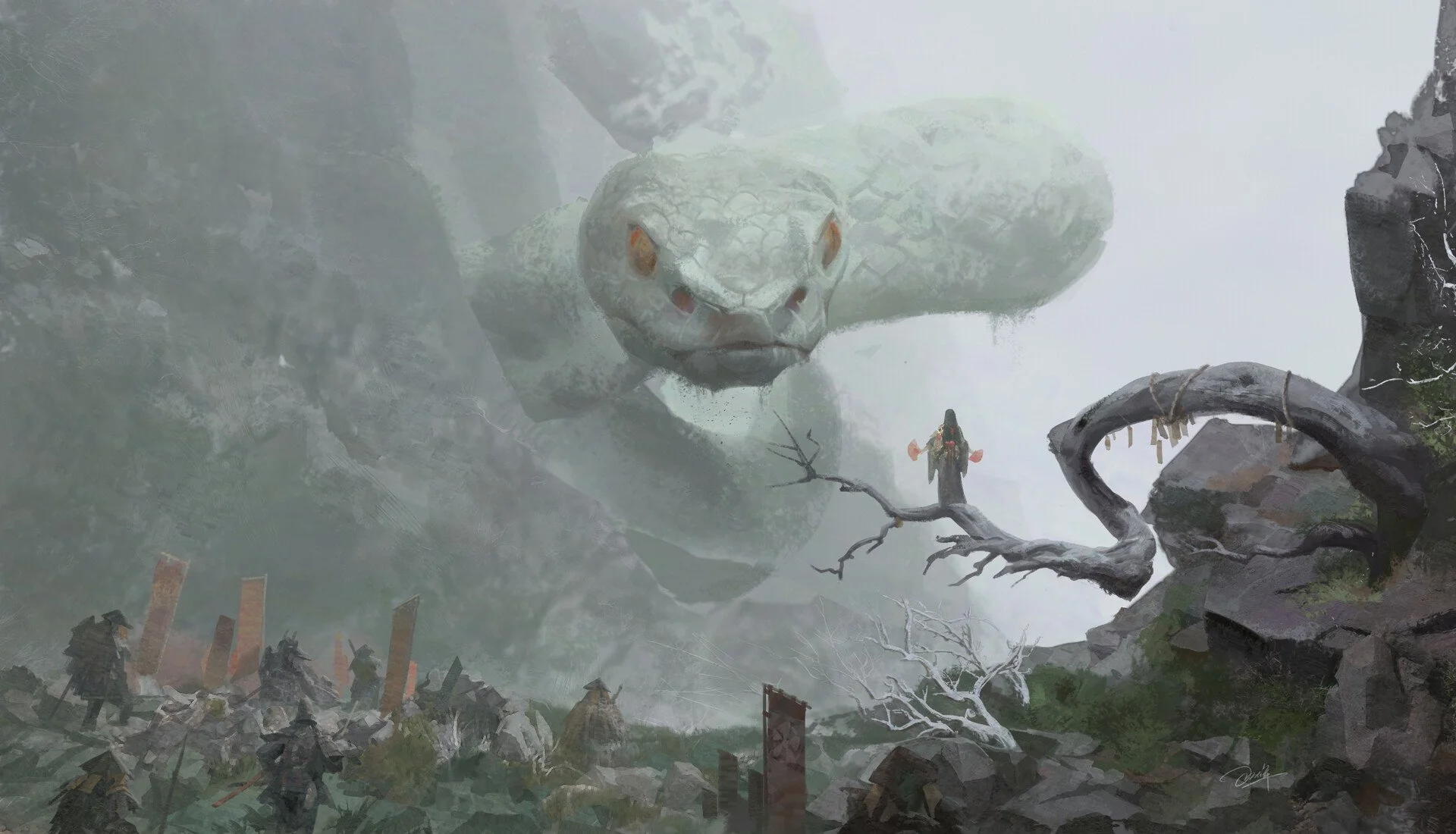The Subterranean Underworld Ecosystem
The Underworld is a remarkable environment, unique in the entire world. But while its frozen mountain and out-of-place temperate forests come to the layman’s mind first, Moriji’s scientific community is perhaps even more interested by what lies below the surface. Indeed, while the chuubaniticity (chuubanitic concentration) of the entire Underworld is extreme, it reaches even higher levels underground, as anyone who has visited a loved one laid to rest will know. Most are familiar with the feeling of descending into a catacomb, accompanied by a priest or priestess, and feeling the cold grow unnaturally with every step down.

In the depths, surrounded by chuubanitic minerals on every side, truly exotic lifeforms can survive. The most important lifeforms of this ecosystem are chuubanititrophic fungus. These mushrooms are remarkable in their ability to vitubisynthesize, allowing them to convert the emissions of chuubanite, both in the electromagnetic and Vitium spectrum, into useful energy. This stimulation of their growth allows them to grow in otherwise nutrient and energy-poor environments such as the caverns and catacombs of the Underworld.
Over thirty different species of chuubanititrophic mushrooms have been recorded in Underworld caverns, most being most adapted to specific environmental chuubanitic concentrations. The most common species, found from the boundary of the Underworld to around half its radius from Mont Mori, is the Dwarf Orb-Cap. Edible besides its chuubaniticity, this mushroom feeds hundreds of species native to the caves. It grows in clumps of around a dozen stalks, each terminating in a white-pink spherical cap, and covered by a shiny gelatinous layer, useful to protect the organism from dehydration due to the cold. Closer to the mount, Reaper’s Hair replaces it as the primary source of nutrition. Instead of small clumps, Reaper’s Hair grows in tufts of hundreds to thousands of thin, silky, pink or red tubes, usually hanging from the ceilings of the tunnels. This increased surface area allows them to absorb ambient chuubanite from the air more effectively, whereas the Dwarf Orb-Cap needs to absorb it from the soil. Air chuubaniticity is not sufficient near the outside of the Underworld for Reaper’s Hair to survive.
Regarding the animals native to the cave, there are too many to do justice to all in this brief article. However, a few occupy the most important niches of the ecosystem’s food chain and should be mentioned.
The Dwarf Necropotamus is a close relative of its full-sized cousin, the Common Necropotamus, found in tropical rivers throughout Moriji. Besides being smaller, only two meters in length, it is also distinguished by its proportionately increased stores of low-hydration fat. This is a requirement to bear the cold temperatures of the caves, especially farther inside the Underworld. This fungivore feeds almost exclusively on a variety of chuubanititrophic fungi, though it will eat small animals within reach opportunistically. Extremely territorial, contact with any necropotamus is ill-advised. One reason they are so territorial is that these necropotamuses rely heavily on memory to find their way in the dark caverns. While the fungi provide some illumination in certain areas, many passages are in complete darkness; necropotamuses quickly learn the exact layout of their territory, down to the square centimeter. This subspecies has highly hardened and chuubanitic canines, known for punching through even plate armor with ease, so great care should be taken not to approach them, even while heavily armored.
Even smaller is the Bald Spider Monkey. These intelligent creatures can commonly be seen in Deadbeat catacombs, feeding on the mushrooms growing from the skeletons’ lingering chuubanite. Having a fifth limb in the form of its prehensile tail lets it traverse the caverns with an ease unmatched by most creatures. Their social behaviors are notable; to protect themselves from the cold, they are often seen fabricating shelters, or huddling together. They also seem to know the use of tools; there are many accounts of a Spider Monkey gathering a bouquet of glowing fungi to use as a source of light, while traveling through an unlit cave.

These fungivores do not live peaceful lives stalking the caverns. Predators hunt them with surprising efficiency, chief amongst them, the Man-Eating Troglochiroptera. While not as large as its cousin, the Man-Eating Saltuchiroptera (Found deep in most Moriji jungles), it shares most of its morphology. The flightless creature has strong limbs, supporting its climbing and jumping-based style of locomotion. Its wings, instead of devolving completely, have become both a weapon and a shield for the creature. The long digits are much thicker and stronger than in bats found on the continent, and feature sharp claws. The “leading edge” of the wings has a sharp bone jutting from the skin. Thanks to those adaptations, the Troglo-Bat can cut and pierce its preys from a safe distance, before coming in to feed with its jaw. As for the webbing of the wings, it comprises a cross-linked mineralized mesh highly resistant to tearing and cutting. Thanks to those properties, the Troglochiroptera can use its wings to protect its more vulnerable head and body from falling rocks or attacks from prey, predators, or humans.
The Troglochiroptera also has fantastic night vision, because of its use of echolocation. Its huge ears are the easiest way to differentiate it from its jungle-bound cousin, besides being smaller, only around two meters tall as opposed to the three to four meters found in the Man-Eating Saltuchiroptera. However, the Troglochiroptera is not the apex predator of this ecosystem, far from it.
This title would go to the Burrowing Sekiboros. The largest species of Sekiboros on the island, this subspecies is highly differentiated from its cousins. Data on them is limited, especially regarding larger specimen; it is believed that a single snake, the largest, has a territory of hundreds of square kilometers, centered on Mount Mori. These bone-white creatures grow dozens of meters long, with unknown upper limits.

The Sekiboros is theorized to be the reason the Underworld cavern system exists to begin with; indeed, geological mechanisms do not explain the extensive and massive size of this system. Moreover, one would expect the forest’s soil to have a depth of no more than two meters. However, soils in the Underworld are well-mixed and aerated to depths of up to twenty meters. The conclusion? The academic consensus is that Burrowing Sekiboros, over the eons, have eroded the region’s bedrock, and furthermore most of the cave system’s tunnels were created by the passage of a Sekiboros. This latter claim is supported by scale markings found on the walls of the tunnels, their smooth, flowing directions, and their nearly circular cross-sections. Tunnels closer to the Mount tend to be larger, which correlates well with the snakes growing in size along the same direction. The widest known tunnels suggest snakes over seventy meters long may have existed.
This size differential ties into the Burrowing Sekiboros’ life cycle. The Sekiboros’ immense size is driven by its need for thermoregulation. In the Underworld, there is a great dichotomy in the fact that the ambient chuubaniticity increases drastically as you near the Mount, but the temperature also drops. This drove the Burrowing Sekiboros to develop an ever-increasing size, allowing it to exploit more chuubanite-rich food sources. This made gigantism-based homeothermy easier, in a physiological mechanism reminiscent of the Blue Whale’s increasing size over its evolutionary history.
However, these difficult requirements make survival much harder for juvenile specimens, who have a lesser capacity for thermoregulation. It is believed this is the reason the Burrowing Sekiboros developed live birthing, allowing the mother’s spawn to grow to a size and metabolism sufficient to survive outside the mother’s body. When ready to give birth, the snake will migrate away from its territory towards the boundary of the Underworld, where temperatures are milder, and the snakes will begin their independent life there. Then, over the course of their long life of continuous growth, the young Sekiboros will have to fight for territory closer to Mount Mori to gain access to food sources able to support their growing size.
The Sekiboros’ hunting style is quite unique as well. Similarly to the Troglochiroptera, it makes uses of sound to hunt. However, instead of listening to sounds in the air, it listens to sounds in the soil. Its ears have evolved into solid plates in direct contact with the ground, allowing it to hear the steps of any sizable creature active near its location, both under and above the surface. Upon detecting its potential prey, it burrows towards it aggressively and attempt to engulf it in its jaws if it is small enough, or may attempt to bury it or constrict it, so as to kill its meal before swallowing it.
Theologists often wonder about potential Heavenly connections between the Sekiboros and the controversial myth of the Infinitum Ouroboros. Information released by the Goddess Faithful don’t seem to suggest any particular paranatural connection, however.